We awoke in our marshy anchorage in the Vernon River to the sound of birds and dolphins swimming around (I still find it curious that there are so many dolphins in the ICW. There was a time when I thought of them as ocean creatures.) Although we skipped most of Georgia, we believe we did spend time in the two best places – Cumberland Island and Savannah.
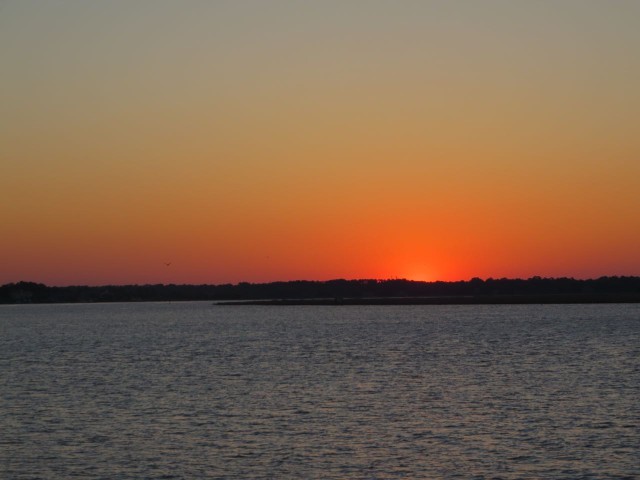
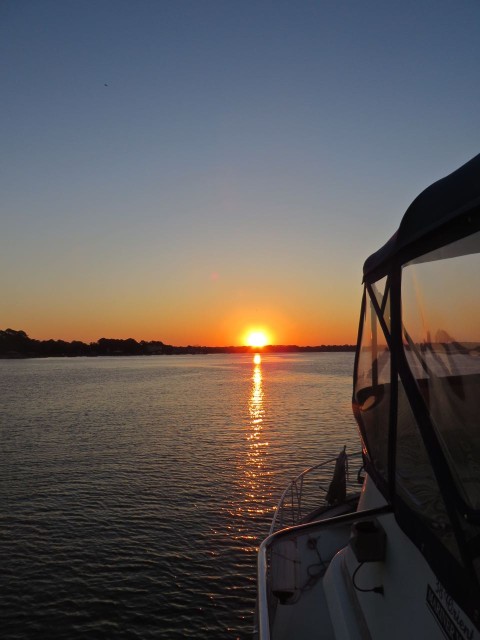

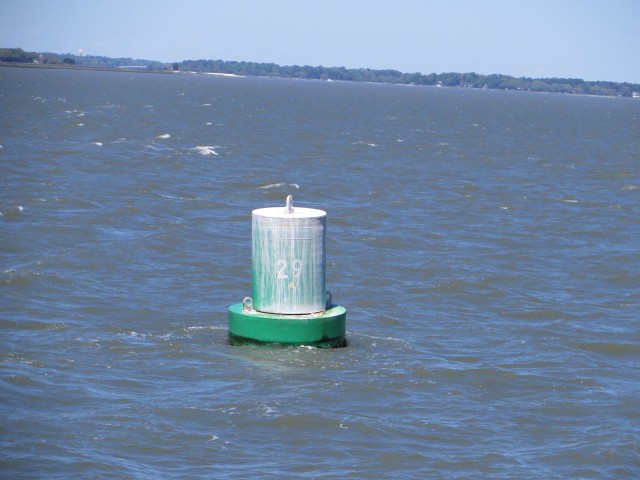

We stopped in Savannah to visit two couples once again. Peter and Kay live on Skidaway Island in the winter months and Connecticut in the summer. We made plans to visit again and they insisted on waving to us as we passed by, even though that would be 7:30 am.
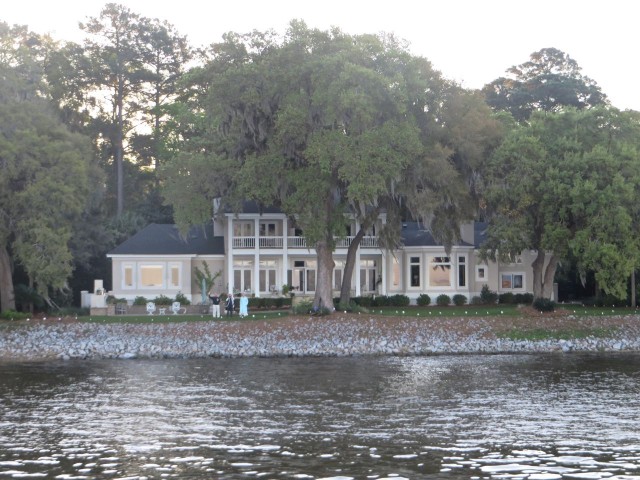
Our final stop for the day, just 16 more miles on top of the 86 miles from Cumberland Island, was the transient dock at our friends’ community in Causton Bluff. Al met Al (yes, they are both named Al) online through a trawler forum and learned that both own Mariner Orients 38. When we stopped in Savannah on our way south we met Al and Lynn in person.
After settling in at the dock, we began a much-needed cleaning of Kindred Spirit. Washing off salt from the offshore run would soon be followed by washing off the tree pollen. Washing the boat is a never ending project (If water is available. If not, just grin and bear it.)
The tides in Georgia are tremendous. Truly tremendous to boaters from Long island Sound like us. The normal tidal range is 8 feet here, but there was a little extra on each end due to the moon phase.
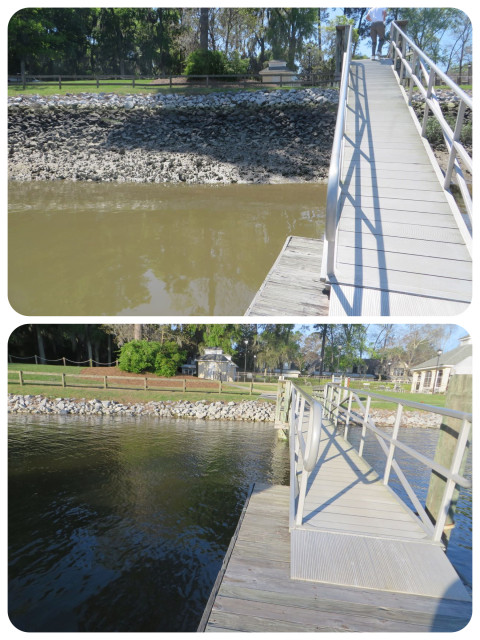
The Causton Bluff docks are just off the ICW and near the marshes. We could watch boats passing by on the ICW and watch the birds hanging around.
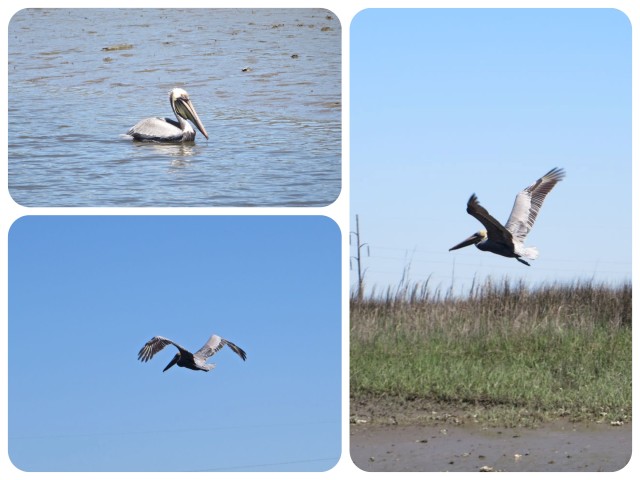
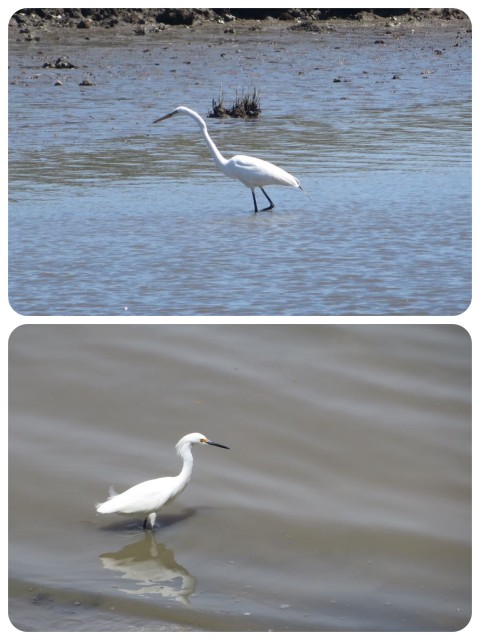
Peter and Kay invited us to dinner for a home-cooked Southern meal. Who could resist an offer like that? What a lovely evening we enjoyed with them -delicious food and lots of fun catching up on news. Peter and Kay’s boat, Cheers, will be Kindred Spirit‘s dock neighbor at Shennecossett Yacht Club in Connecticut this summer.
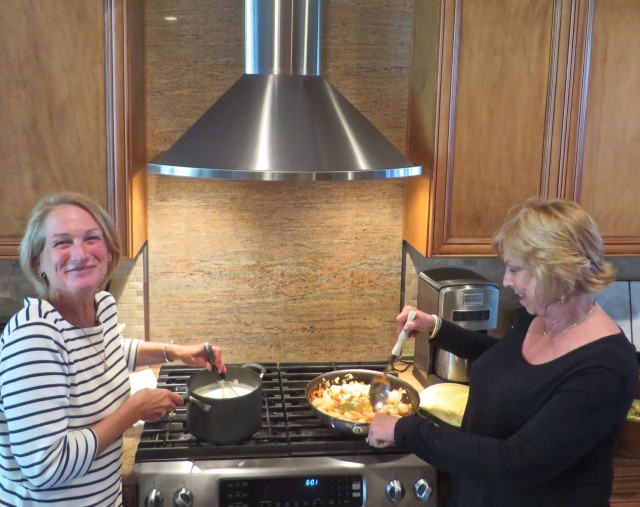

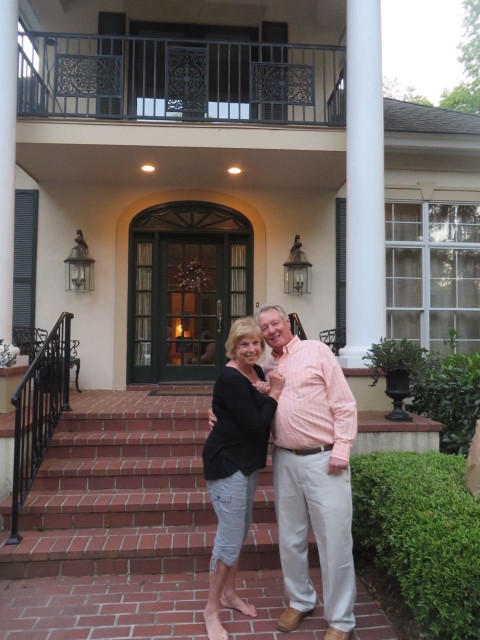
We had explored the city of Savannah for a day during our visit in November (Savannah, the City of Squares and found it be a gracious and beautiful southern city. Although we weren’t able to tour old Savannah again, we did have the opportunity to visit Bonaventure Cemetery, outside of historical downtown Savannah and just 2 miles away from where we were docked. Bonaventure Cemetery is a public cemetery located on a scenic bluff of the Wilmington River and is considered to be one of the most beautiful cemeteries and one of the most haunted locations in America.
The cemetery is located on the site of “Bonaventure Plantation”, a 600-acre plantation with its own private cemetery originally owned by John Mullryne. Bonaventure means “good fortune.” In 1846 it was sold and the new owners formed the Evergreen Cemetery Company in 1868. Evergreen Cemetery Company was later purchased by the City of Savannah in 1907, making the cemetery public and changing the name to Bonaventure Cemetery.
There are over 30,000 interments (burials) in the 600 acre cemetery, including famous people and regular folks. There is actually a website finding specific graves in a any cemetery– Find a Grave. Who knew such things existed? According to the Bonaventure section of Find a Grave, there are 15 Watsons buried in Bonaventure.
It would have been easy to spend hours and hours, if not days, wandering through this cemetery. The Spanish moss hangs from the live oaks casting a sorrowful, but beautiful light over the graves. The tombstones are as varied as the time periods and the personalities of those who created or chose each one.
Without captions, let the photographs paint the picture. As it is, they only touch the surface of the experience.

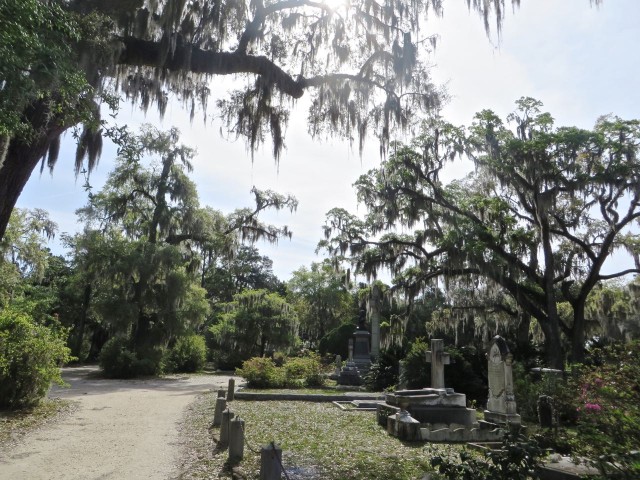
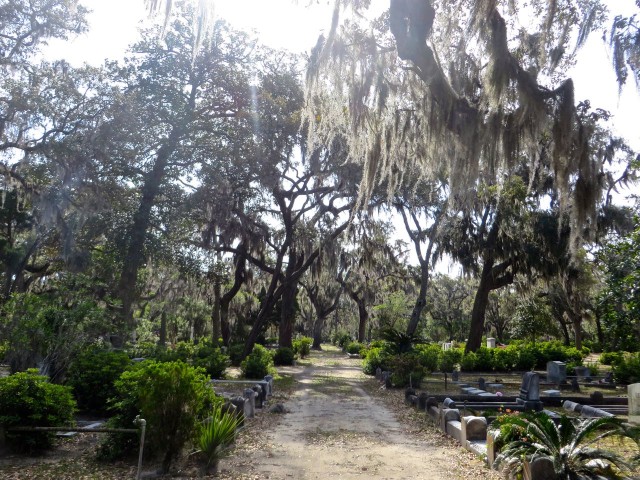
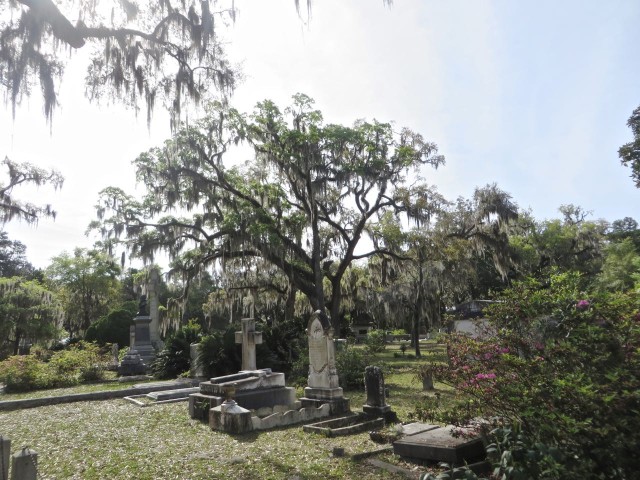
As you walk down the roads lined with the live oaks the first thing you notice is that the graves are organized in family plots, usually with a concrete boundary marker or fencing.
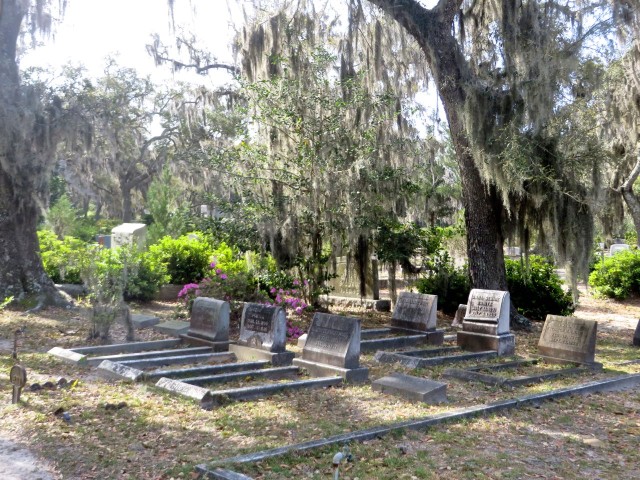
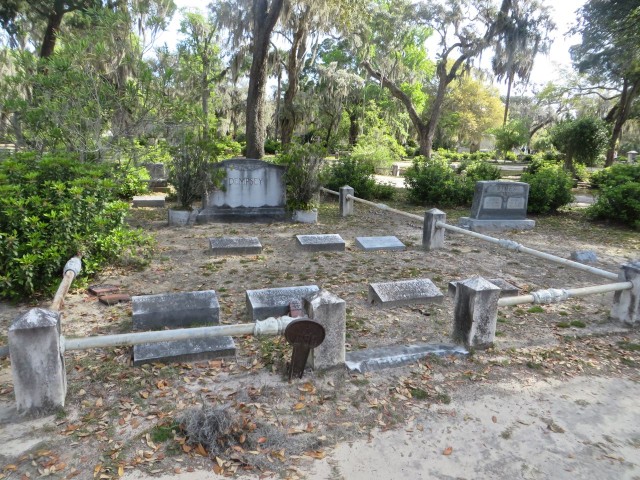
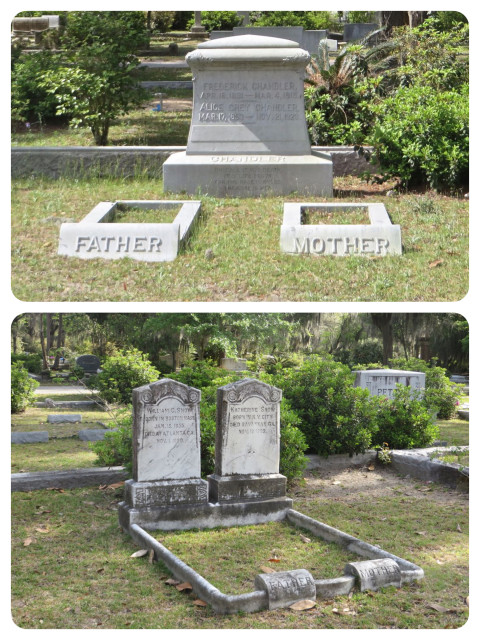
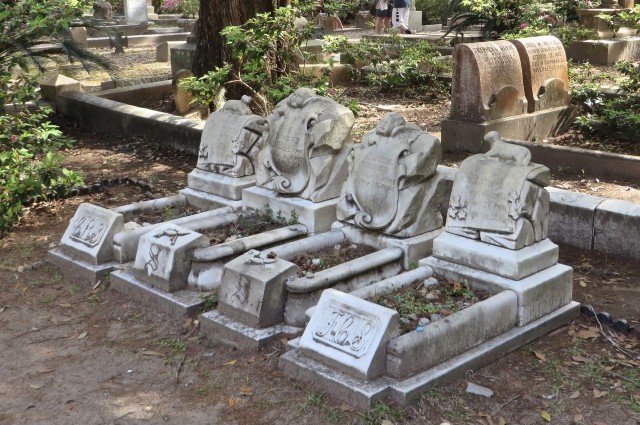
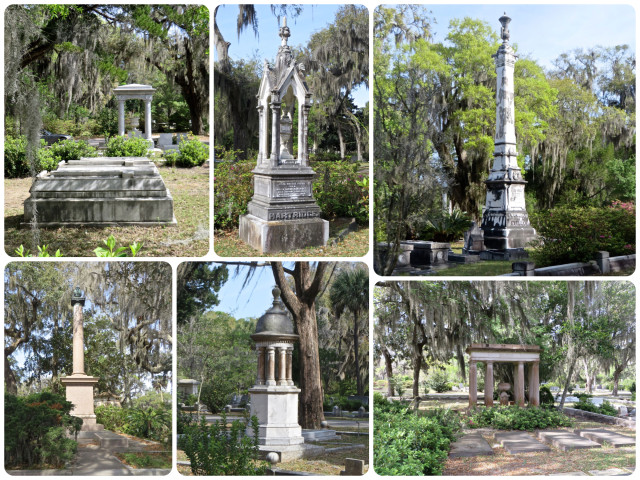
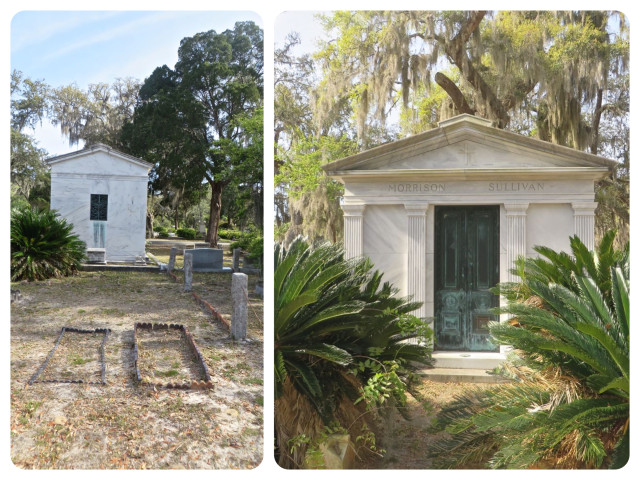
The statues that adorn many of the gravesites are works of art, evoking a mournful sadness. We overheard a guide telling his group about a sculptor named John Walz who became very well-known from his memorial sculptures here at Bonaventure. I do not know which of these were created by him.
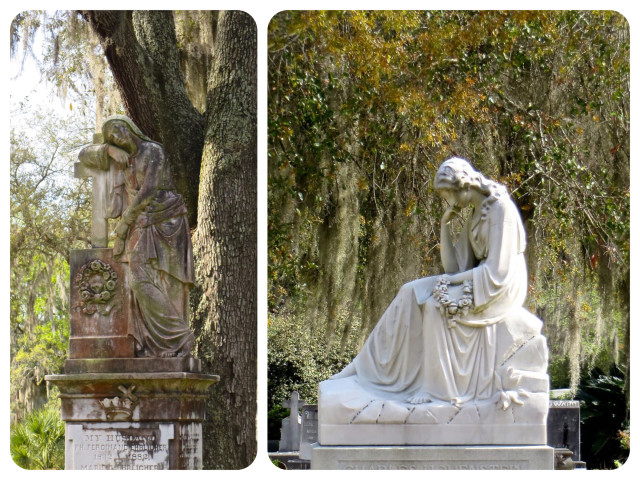
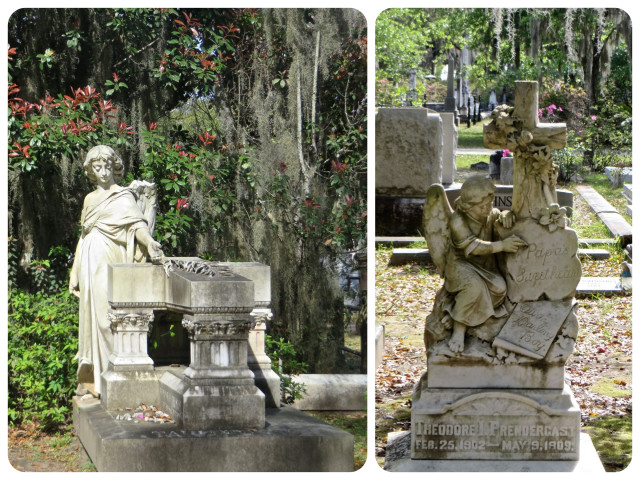
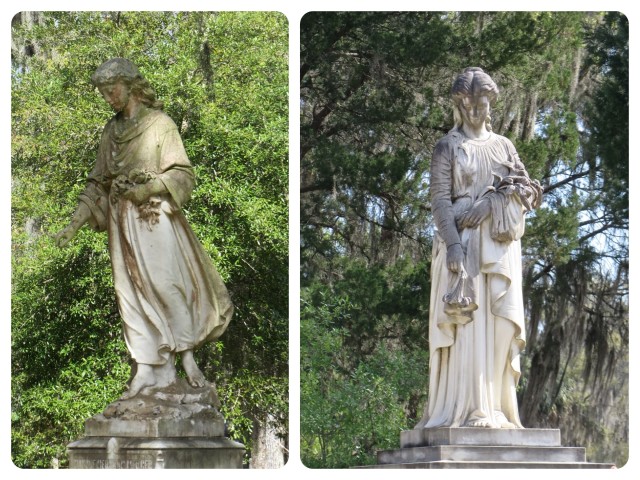
As we wandered in the sun and shadows, we also wondered if we would find anyone named Watson (this was before I stumbled upon the “Find A Grave” website.) Purely by accident, we saw the name Watson on the ground and the full name “Gracie Watson.”
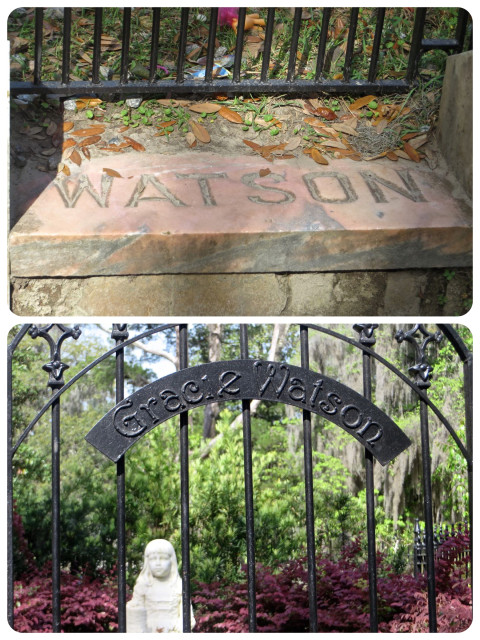
We paused for a longer time here to read about little Gracie. It was not until later that I learned how famous this little girl has become.
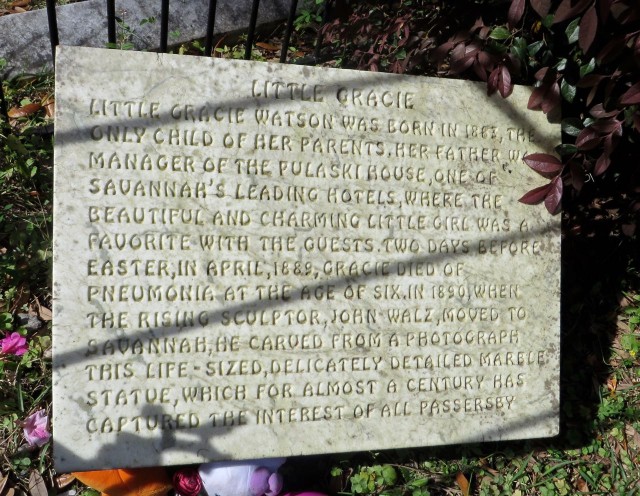
The plaque above reads — “Little Gracie Watson was born in 1883, the only child of her parents. Her father was manager of the Pulaski House, one of Savannah’s leading hotels, where the beautiful and charming little girl was a favorite with the guests. Two days before Easter, in April 1889, Gracie died of pneumonia at the age of six. In 1890, when the rising sculptor, John Walz, moved to Savannah, he carved from a photograph this life-sized, delicately detailed marble statue, which for almost a century has captured the interest of all passersby.”
Although this is the family plot, Gracie rests here all alone, which is so sad. After her death, her father and mother eventually left Savannah and moved back to New England.
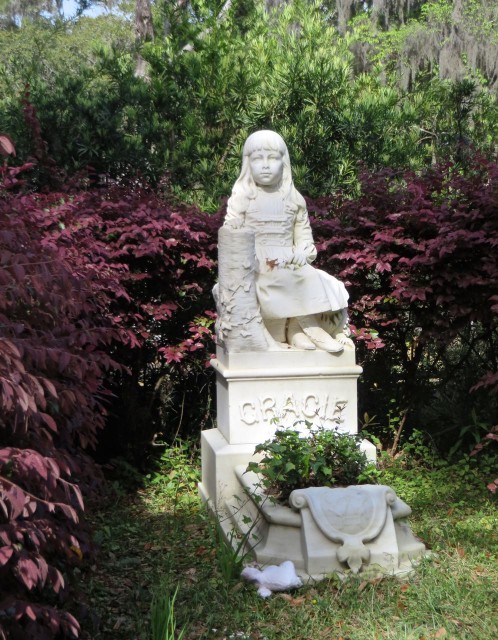
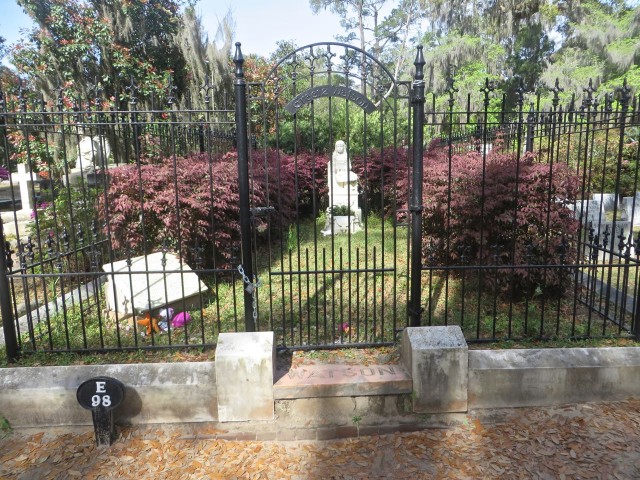
Our brief time in Savannah came to a close too soon, but we did squeeze in a breakfast with Al and Lynn before we departed.
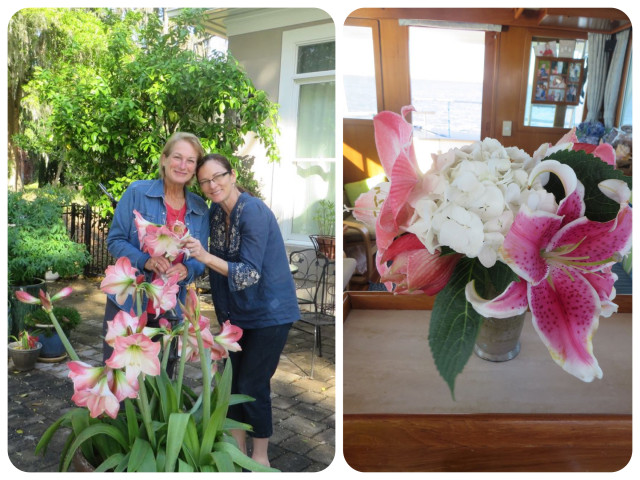
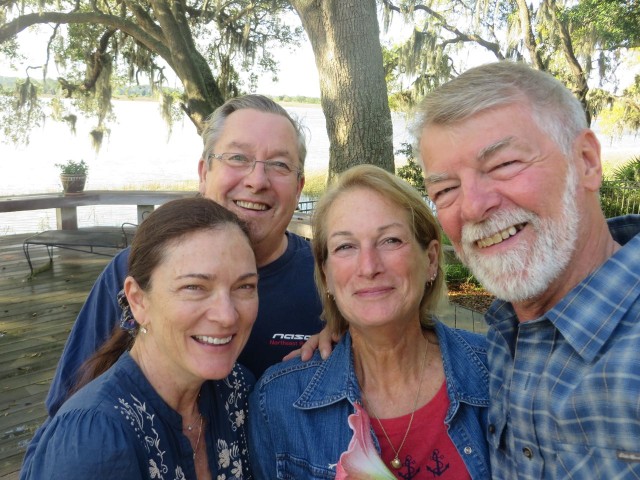
Southern hospitality and warmth is not a myth, it is a fact. Not only did we have that early morning wave from Peter and Kay to welcome us, but Al and Lynn came down to the dock to wave goodbye and send us off in style.
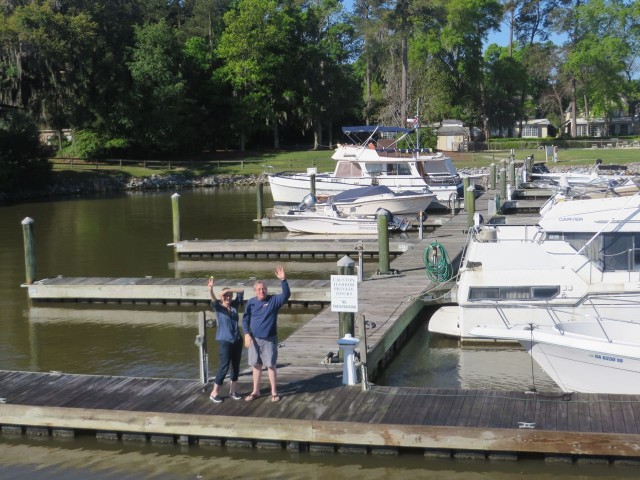
We may have only made two stops in Georgia, but both were filled with friends and “good fortune.”

Leave a Reply